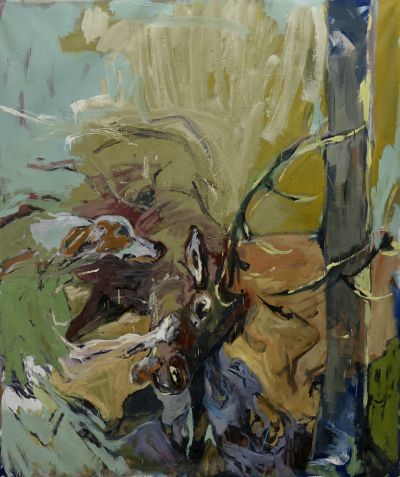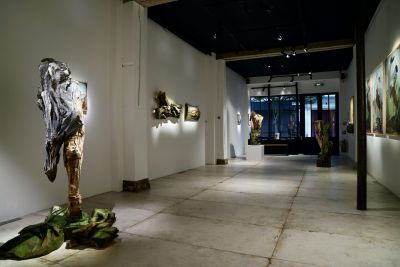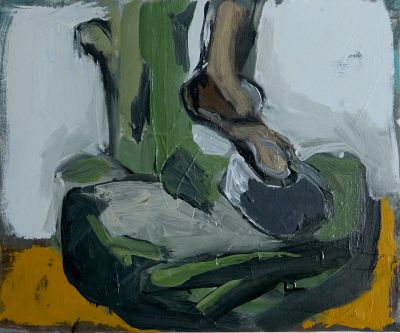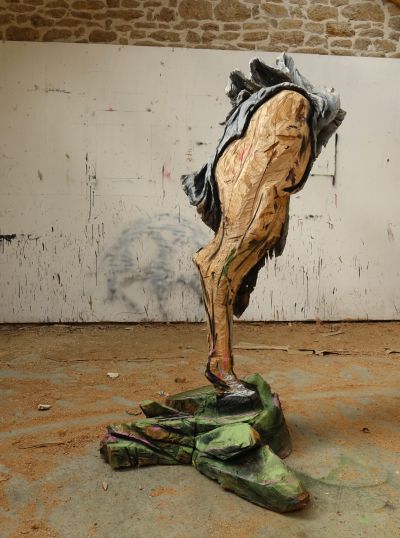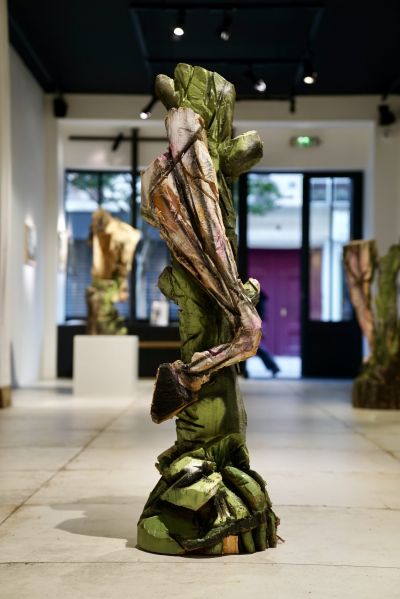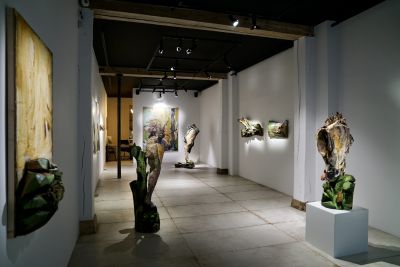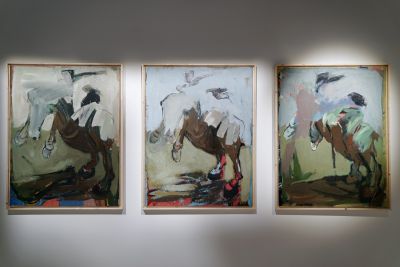Cedric Le Corf's second Paris Solo Show at Loo&Lou Gallery was eagerly awaited. In 2020, the public discovered the work of this young artist of German and Breton origins, whose powerful, baroque sculptures, in which porcelain was interwoven with wood, showed great promise. Born of his experience in Madrid at Casa Velasquez, Cedric Le Corf's new works put aside the use of porcelain to focus on the luminous and colorful possibilities of painted wood.
With these new sculptures and high-reliefs in polychromed wood, Cedric Le Corf explores the expressiveness of form, and the theatricality of color and light. Drawing on a vast imaginary museum that stretches from North to South, creating astonishing explosions, this research is imbued with a singular vibrancy. Of course, there's the Spanish Baroque taste for tragedy, charged with the eloquence of chiaroscuro and mastery of color, as seen in the painted sculptures with waxy pulpits or glazed ceramics by Juan De Juni or Alonso Berruguete. But in this way of attacking wood and working with color, there is also the survival of a German tradition. This tradition ranges from the Rhenish heritage of the polychrome wood schools and the crude realism of Dürer and Grünewald, to the powerful German Expressionism of Baselitz and Lüpertz, whose language of tension and laceration left its mark on the artist during his time in Berlin.
Whereas yesterday's sculptures focused on the tragic representation of the body, whether human or animal, butchered, quartered and recomposed, today's new pieces focus on the theme of forest and light. They stem from childhood memories, echoes of the forest where Cedric Le Corf grew up in Germany. But they also stem from more recent observations, during walks in the Celtic lands where the artist now lives again, in the Scorff valley in Morbihan. Immersed in the forest. This is where Cedric Le Corf chooses his wood. Maple, chestnut, oak, eucalyptus, cherry. Whether painted or left untreated, the wood is always soft enough to be worked quickly, following the spontaneous flow of ideas and sensations felt by the artist. Stimuli abound in this everyday environment steeped in history, in the heart of vibrant nature.
Nearby are Porz a maro (the gates of death) and Devil's Rock, where the ocean plays its marine ode, turning smooth rock into a relief in its own right. And then there's the timeless soul of the land. Here, the remains of an Iron Age village. Here, medieval gems. Like the Eglise Notre-Dame de Kernascleden, with its colorful Flamboyant Gothic vaulting, the whirling of Hell and its danse macabre. Like the chapel of Sainte-Barbe, a favorite of the artist's, with its keystones, tinderboxes and sculpted beams, transformed into monstrous Gothic creatures.
Of course, the raw, archaic, inhabited and powerfully expressive aspect of this pervasive context, which nourished the works, is also present. We feel the textures and smells, like green, damp moss, the taste of mushrooms or the grainy hardness of low stone walls. The light vibrates through the leaves and the trees shimmer in the puddles. You can hear the wind and the swirls of the sea banging against the large rocks. A sea field found in some of the engravings, drypoint on metal, exhibited alongside the reliefs and sculptures. We listen to the passage of time, to the rhythm of deer footprints or fox skulls embedded in the earth. Like a hollow path, Cedric's work is all light and dark. Intensely dramatic, traversed by powerful vital and telluric forces, it plunges us into the beauty of the dark. Crossing a dark forest, pierced by a trickle of light. Just enough for rebirth.
- Amélie Adamo, Author, Art critic and independant curator, Paris, July 2023
